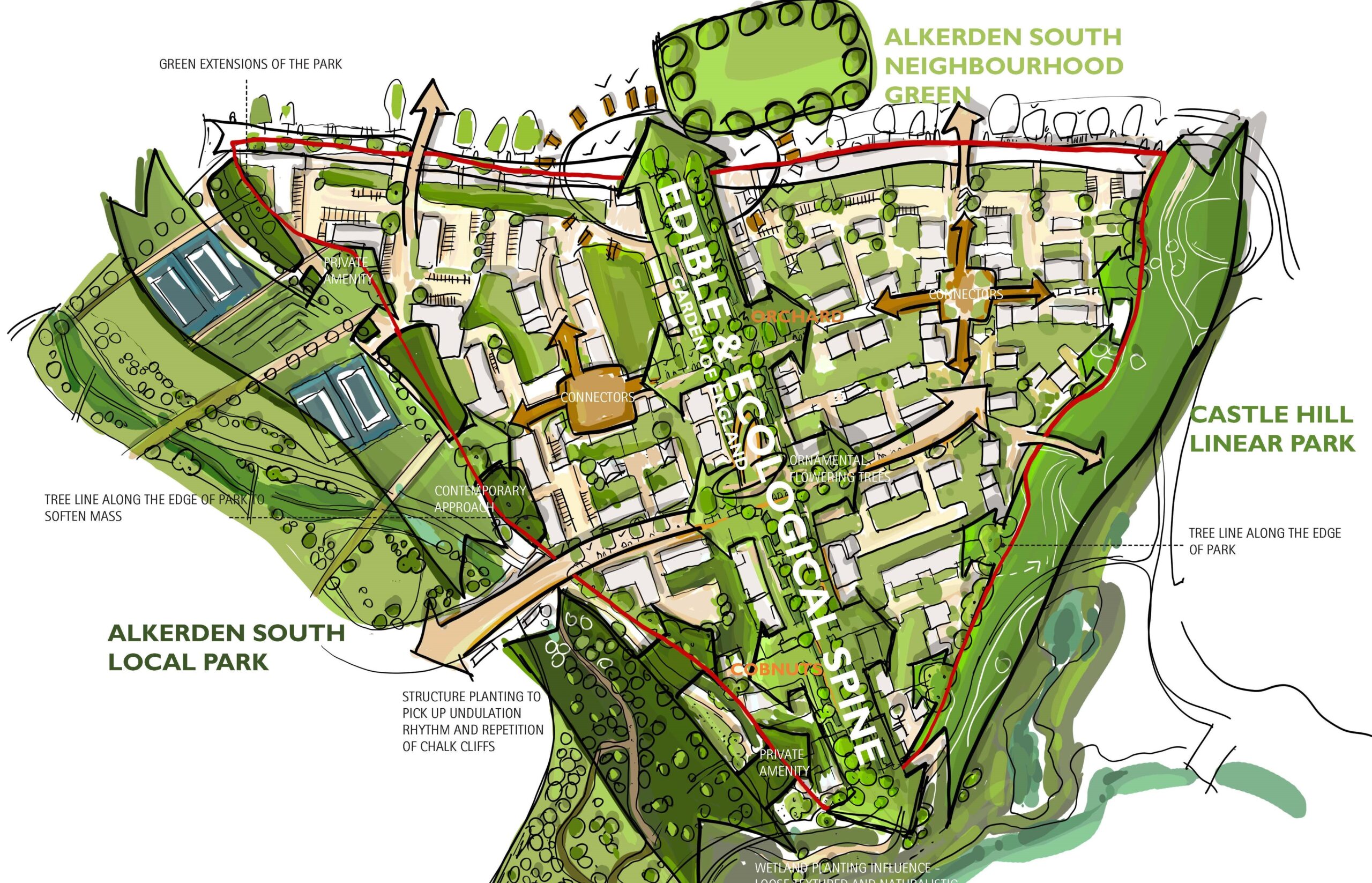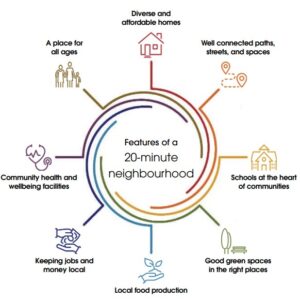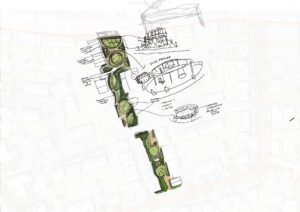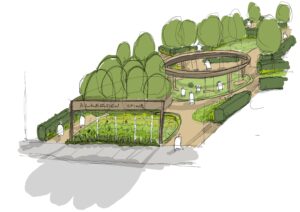
Thought Piece: Designing Healthy Streets
Director Donald Roberts reflects on why Landscape Architects are pivotal in designing healthy streets
Streets play an active role in promoting health and wellbeing through walking, cycling, play and high-quality green space. Cities worldwide are prioritising the integration of environmental and sociability considerations into urban design. There are significant benefits for the communities that use streets as urban space and tackle issues such as childhood obesity and safer spaces for all. This shift has led to the development of indices, such as those focusing on the health of city streets, shedding light on the impact of traffic intensity on various aspects of urban life and the use of natural capital accounts.
Historically the urbanisation of streets contributed to a disconnect between people and urban spaces, with a preference for personal vehicles over healthier alternatives. Major roads, in particular, lead to cognitive and social disengagement, resulting in diminished air quality, noise pollution, and a loss of much-needed green spaces. The promotion of healthier streets in the context of urbanisation and the increasing shift to higher density living, however, does have its challenges when vehicular modes of travel have been prioritised and community needs not adequately considered to move away from the dominance of the car.
Urban streets then must move away from being transient spaces, lacking opportunities for liveliness, social engagement, and informal exchange and must encourage safe and accessible street use, opportunities for social interaction and mixing are crucial. The role of active travel in daily routines can play a significant role. And investing in walking and cycling can significantly contribute to local economic development.
Key Active Travel Initiatives
The 20 Minute Neighbourhood: Local authorities have a part to play in achieving this and The Town and Country Planning Association advocate for the influence of urban planning on community health.
The establishment of ‘complete, compact, and connected’ neighbourhoods, commonly known as 20-minute neighbourhoods, has been proven to result in healthier living spaces and streets while contributing to climate targets.
By encouraging mixed-use developments and accessible public spaces, the 20-minute neighbourhood not only promotes healthier lifestyles through increased physical activity but also addresses environmental sustainability and social cohesion.
Similarly, Sustrans also advocate for walking and cycling schemes, and cover important aspects such as the economic case, housing growth, and planning, as well as health resources.
- The London Healthy Street initiative: initiated to assess the fairness, sustainability, and attractiveness of urban space, led to the development of the Healthy Streets Survey. This survey captures real-life experiences, assessing attractiveness and enjoyment, and utilises 10 Healthy Streets Indicators to provide a quantified assessment of city street performance, enabling comparisons across locations and over time. It gathers perceptions through a questionnaire from individuals walking, cycling, and residing on a street, to understanding noise, safety, shade and shelter. These aspects, are now studied in conjunction, shows the need for a more inclusive street design that looks at the interaction between people’s behaviour and the social/physical environment.
The benefits of good street design:
Effective street design, particularly with the inclusion of trees, can yield numerous benefits. This is achieved not only by slowing down cars but also by enhancing air quality, moderating energy usage, and contributing to the overall well-being of residents. Promoting slower traffic is linked to a reduction in accidents, alleviated congestion, decreased parking pressure, and increased levels of walking and cycling for daily journeys, fostering safer and healthier urban centres and contributing to substantial cost savings for the NHS and healthcare. Designing streets with flexibility to accommodate various uses, such as pocket parks, outdoor dining areas, and community activities accessible by walking and cycling, aligns with the current trend of staying local. Fostering a local identity in streets, making them distinctive, not only aids navigation but also nurtures a sense of community and civic pride.
We are very interested to hear that Stockholm has just opened its first fietsstraat (cycle street). A fietsstraat is designed as a bicycle route on which cars are also allowed. As the bicycle is the preferred mode of transport, cars are guests on these cycle streets. We will be watching this initaive with interest.
Case Study: Alkerden, Ebbsfleet
Our project in Alkerden, Ebbsfleet, effectively embodies these principles. Rather than adhering to the original scheme proposals allowing unrestricted vehicle access through the site’s centre, we envisioned this space as an edible and ecological spine. This innovative concept allowed us to halve vehicle access along the central spine, transforming it into an urban linear park.
This redesign provides safe streets for walking, cycling, and recreational activities, lined with trees and orchards, fostering a relaxing environment for residents to unwind and connect with one another.
Additionally, we seamlessly integrated the wider public realm, establishing crucial links that enhance the user experience, offering picturesque views of the lake and chalk cliffs. This design aligns with the principles of providing healthy active streets and clear legible connections and creating environments that support well-being.
Our approach to designing well connected communities:
As landscape architects, we advocate for the transformation of urban environments to promote healthier living. Our projects are guided by these principles, embodying the shift towards active and well-connected communities.
The success of initiatives like the 20-minute neighbourhood and the London Healthy Street initiative inspires this approach. Our projects including Orchard Farm KentOrchard Farm, Kent – WLA Award and LI Award shortlisted, and Alkerden Ebbsfleet demonstrate the impactful role of landscape architecture in creating healthy active, and community-centric spaces. By prioritising healthy streets and places, clear connections, green infrastructure, and the well-being of residents early in the project process, projects can characterise the essence of healthier streets and significantly contribute to the evolution of urban spaces.




